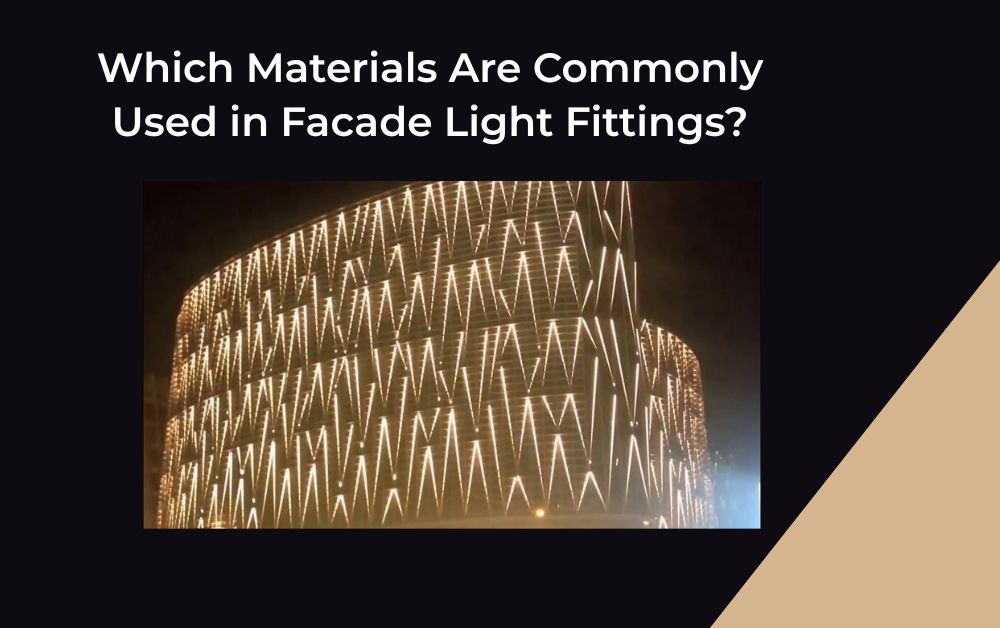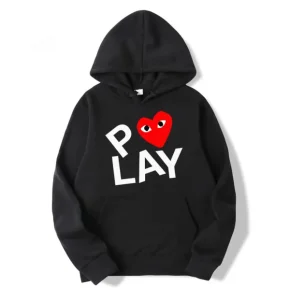Lighting is one of the most important elements in building design. While indoor lighting helps create a comfortable environment, facade lighting makes the building stand out from the outside. Whether it is a home, hotel, shopping mall, or office tower, the way the building looks at night depends heavily on its facade lighting system.
But the performance and beauty of facade lights depend on one key factor – the material used in their fittings. Choosing the right material ensures the lights last long, look good, and remain safe in different weather conditions. In this article, we will explain in simple terms the materials commonly used in facade light fittings and why they are important.
Why Material Selection Matters in Facade Light Fittings
Note : Facade light fittings in Dubai are designed to enhance building exteriors with stylish and durable lighting solutions. These fittings highlight architectural details while withstanding the local climate. Choose the right facade light fittings in Dubai to add beauty and long-lasting value to your property.
The material of a light fitting is not just about looks. It has a direct impact on:
- Durability – Strong materials protect lights from heat, moisture, and dust.
- Safety – Good materials reduce the risk of electrical hazards.
- Design – Material choice influences the overall appearance of the building.
- Cost efficiency – High-quality materials save money in the long run by reducing repair or replacement needs.
For outdoor lighting like facade lights, the fitting must handle sunlight, rain, wind, humidity, and sometimes salty air in coastal regions. This is why manufacturers use specific materials that balance strength, safety, and style.
Common Materials Used in Facade Light Fittings

Let’s take a closer look at the most widely used materials in facade lighting fittings and their advantages.
1. Aluminum
Aluminum is one of the most popular materials used in facade light fittings.
Why Aluminum Is Used
- Lightweight – Easy to handle and install.
- Corrosion-resistant – Does not rust easily, making it suitable for outdoor use.
- Strong – Can handle heat and pressure without losing shape.
- Flexible design – Can be molded into many styles for modern buildings.
Common Uses
Aluminum fittings are mostly found in LED facade lights, wall washers, and linear lights. Because of their sleek finish, they are also widely used in high-end commercial buildings.
2. Stainless Steel
Stainless steel is another strong and long-lasting material.
Why Stainless Steel Is Used
- High durability – Resists wear and tear over many years.
- Corrosion resistance – Works well in coastal areas where air contains salt.
- Premium look – Shiny and modern finish adds style to the facade.
Common Uses
It is commonly used in decorative facade lights, bollards, and wall-mounted lights for luxury homes, hotels, and office towers.
3. Brass
Brass is an alloy made of copper and zinc, known for its strength and beauty.
Why Brass Is Used
- Elegant look – Golden color gives a classic, stylish appeal.
- Durability – Strong and long-lasting.
- Weather resistance – Performs well in outdoor conditions.
Common Uses
Brass is often used in decorative facade light fittings where aesthetics are important. Traditional buildings, heritage hotels, and villas use brass lights to add a touch of luxury.
4. Copper
Copper is a premium material used in some high-quality facade fittings.
Why Copper Is Used
- Natural beauty – Reddish-brown finish gives a warm, rich look.
- Ages gracefully – Forms a greenish patina over time, which protects the metal and adds character.
- Durable – Resistant to harsh weather conditions.
Common Uses
Copper fittings are often used in heritage lighting, villas, resorts, and luxury projects where design matters as much as performance.
5. Plastic (Polycarbonate or ABS)
Not all fittings are made from metals. Strong plastics are also used in many modern designs.
Why Plastic Is Used
- Lightweight – Easier to install compared to metal.
- Affordable – Cost-effective for large projects.
- Weather-resistant – Special plastics like polycarbonate are UV-resistant and durable.
- Design flexibility – Can be molded into many shapes and colors.
Common Uses
Plastic fittings are often used in bulkhead lights, LED modules, and some residential facade lights. They are popular in areas where cost is a major factor.
6. Glass
Glass is often combined with other materials in facade light fittings.
Why Glass Is Used
- Transparency – Allows maximum light output.
- Style – Frosted or colored glass adds beauty to the design.
- Heat resistance – Special tempered glass can withstand high temperatures.
Common Uses
Glass is commonly used as a cover or diffuser in wall lights, spotlights, and decorative facade fittings.
7. Die-Cast Materials
Die-casting involves shaping metals like aluminum or zinc into fittings using molds.
Why Die-Cast Materials Are Used
- High strength – Can handle outdoor stress.
- Precision design – Allows complex shapes for modern lighting designs.
- Corrosion resistance – With proper coatings, it lasts long in harsh weather.
Common Uses
Die-cast fittings are widely used in LED facade lights, floodlights, and architectural lighting systems.
8. Powder-Coated Metals
Powder coating is a protective layer added to metals like aluminum and steel.
Why Powder-Coated Metals Are Used
- Corrosion protection – Coating prevents rust and damage.
- Aesthetic finish – Available in different colors and textures.
- Durability – Increases the lifespan of fittings.
Common Uses
Powder-coated fittings are used in residential and commercial facade lights where both durability and looks matter.
Comparing Different Materials
To make things simpler, here’s a quick comparison of these materials:
| Material | Durability | Cost Level | Appearance | Common Use |
|---|---|---|---|---|
| Aluminum | High | Moderate | Sleek, modern | LED facade lights |
| Stainless Steel | Very High | High | Premium, shiny | Wall-mounted, bollards |
| Brass | High | High | Classic, golden | Decorative lights |
| Copper | Very High | Premium | Warm, stylish | Heritage/villas |
| Plastic | Moderate | Low | Flexible design | Bulkhead, residential |
| Glass | High | Moderate | Stylish, transparent | Covers, diffusers |
| Die-Cast Metals | High | Moderate | Precise, modern | Floodlights, LED lights |
| Powder-Coated | High | Moderate | Custom colors | Commercial & residential |
Factors to Consider When Choosing Material
When selecting facade light fittings, the right material depends on several factors:
1. Location of the Building
- Coastal areas need corrosion-resistant materials like stainless steel or copper.
- Dry regions can use aluminum or powder-coated metals.
2. Type of Project
- Luxury hotels and villas often prefer brass or copper for elegance.
- Large commercial projects may choose aluminum or die-cast for cost efficiency.
3. Maintenance Needs
- Copper and brass require occasional polishing.
- Powder-coated metals and plastics need minimal care.
4. Budget
- Plastic and aluminum are cost-friendly.
- Brass and copper are premium options.
Future Trends in Facade Light Fitting Materials
With new technology and design trends, materials are also evolving. Some upcoming trends include:
- Smart coatings – Materials with self-cleaning or anti-dust surfaces.
- Eco-friendly plastics – Recyclable polycarbonate materials for sustainability.
- Hybrid fittings – Mixing metals and glass for modern architecture.
- Lightweight composites – Strong but lighter than traditional metals.
These innovations will make facade lighting more durable, stylish, and energy-efficient.
Final Thoughts
Choosing the right material for Star Facade Lighting fittings is not just about looks; it is about durability, safety, and long-term value. Aluminum, stainless steel, brass, copper, plastic, glass, die-cast metals, and powder-coated finishes all serve different purposes.
The best material depends on the building type, location, budget, and design goals. By selecting carefully, you can ensure that your facade lighting not only enhances the beauty of your building but also lasts for many years with minimal maintenance.
For more insightful articles related to this topic, feel free to visit writoka


